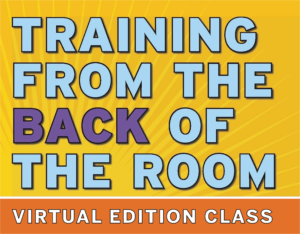4 Suggestions for Learning – and Teaching – in a Virtual World

The human brain evolved over millions of years to learn “on-the-fly,” that is, while the physical environment was constantly changing. The brains of our ancestors adapted to change slowly, over time, and perfected certain learning behaviors. The current situation with the global pandemic has exponentially increased our need to do the same, only faster.
As humans, we first learn by imitation: watching what our parents and other older family members do and then attempting to do the same. Walking, talking, and all the other physical and mental skills we master are based on imitation. The first step in learning anything is imitation.
 As humans, we also learn by teaching others what we already know how to do. So the parent teaches the child, the older sibling teaches the younger, the teacher teaches the student, the master teaches the apprentice, and the more experienced learner teaches the less experienced one. We master what we teach.
As humans, we also learn by teaching others what we already know how to do. So the parent teaches the child, the older sibling teaches the younger, the teacher teaches the student, the master teaches the apprentice, and the more experienced learner teaches the less experienced one. We master what we teach.
As humans, we also learn through making mistakes. Failure is as much a part of learning as success. It’s through our mistakes that we fine-tune our eventual successes. Learning isn’t a straight line; it’s a zig-zag through a series of physical and mental challenges until we reach a certain degree of mastery. The need for perfection when learning anything new can derail our progress. Approximation is a necessary part of successful learning.
Finally, we humans are a messy species – we learn, forget, progress, regress, adapt to change, become rigid in the face of sudden reversals, and we often lament having to learn new skills even while the old skills no longer serve us.
Now, let’s take a look at how we can use these ingrained learning behaviors to adapt to the current global pandemic. More specifically, how can we, as trainers, teachers, and instructors help other humans learn, no matter what the age or curriculum? How can we adapt to the current situation where most of us have had to move from in-person classes to a virtual-learning world? Here are 4 suggestions:
1. Find your mentors and imitate them. Do an Internet search for free or reasonably-priced online classes about how to create successful virtual learning experiences. Find people you respect who are teaching online and ask them for their suggestions. Begin to collect best practices for virtual instruction. Do the research; put into practice what you’ve learned.
 2. Teach others what you’re learning as you learn it. There is no better way to move learning into long-term memory than “spaced practice” which simply means reviewing/revisiting content or skills in a variety of ways over a period of time. One of the best ways to do this is to teach someone else what you just learned. So grab a few family members, friends, or colleagues and practice one or two virtual instruction tips that you learned from your mentors. Ask your colleagues to be your “audience” while you walk them through an online learning strategy.
2. Teach others what you’re learning as you learn it. There is no better way to move learning into long-term memory than “spaced practice” which simply means reviewing/revisiting content or skills in a variety of ways over a period of time. One of the best ways to do this is to teach someone else what you just learned. So grab a few family members, friends, or colleagues and practice one or two virtual instruction tips that you learned from your mentors. Ask your colleagues to be your “audience” while you walk them through an online learning strategy.
3. Close enough is okay! You WILL make mistakes, and technology failures WILL occur, regardless of how much preparation you do before teaching virtually. If you explain this to your learners before the class begins, and if you also explain your “back-up plan” should the technology fail, they will relax and so will you. Allow time to handle the inevitable “challenges” and use humor to ease the “cognitive load” of teaching and learning in a digital environment.

4. Ask yourself: “Is there another way?” You can love it or hate it. You can lament about how inadequate virtual instruction is compared with in-person instruction. You can sigh over how much is lost in a virtual classroom as opposed to a face-to-face one. Or you can challenge yourself to learn all that you can about effective virtual instruction and then put these “best practices” to use in your own virtual classes. You can challenge yourself to take a few in-person, collaborative learning strategies and adapt them to virtual learning. You can ask yourself, “Is there another way to do this activity that would serve my virtual learners well?”
If you practice the above 4 suggestions, you will experiment, learn, adapt, and become the best virtual instructor that you can possibly be for these changing times – and you’ll learn “on-the-fly” like our ancestors did, only now you’re doing it in a virtual world.
**************************************
